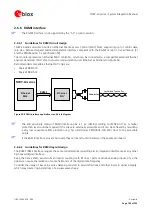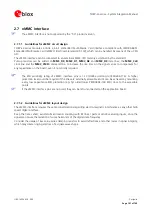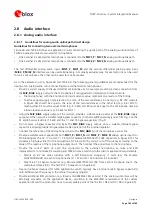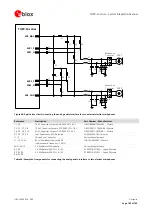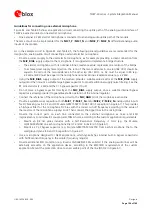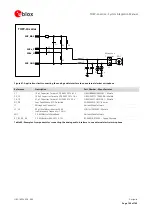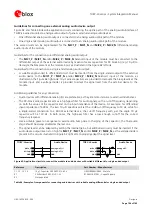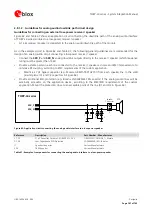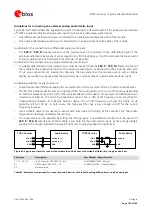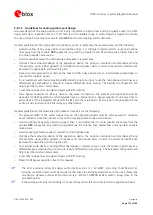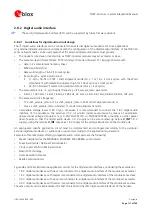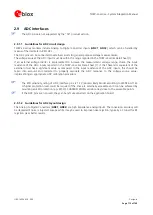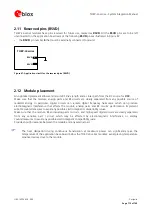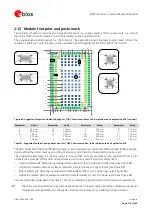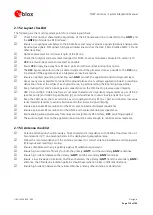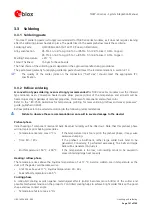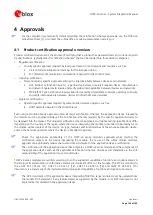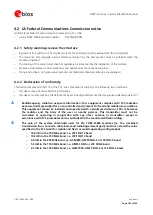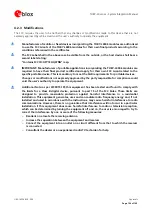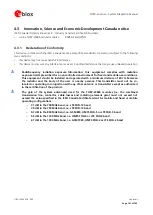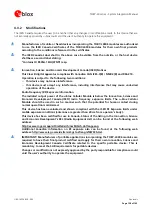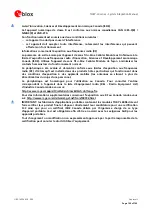
TOBY-L4 series - System Integration Manual
UBX-16024839 - R04
Design-in
Page 114 of 143
2.10
General Purpose Input/Output
2.10.1.1
Guidelines for GPIO circuit design
A typical usage of TOBY-L4 series modules’ GPIOs can be the following:
Wi-Fi enable function provided by
GPIO1
(see Figure 58 in section 2.6.5)
GNSS supply enable function provided by
GPIO2
(see Figure 54, Figure 56 in section 2.6.4)
21
GNSS Tx data ready function provided by
GPIO3
(see Figure 54, Figure 56 in section 2.6.4)
GNSS RTC sharing function provided by
GPIO4
(see Figure 54, Figure 56 in section 2.6.4)
SIM card detection provided by the
GPIO5
(see Figure 39 / Table 30 in section 2.5)
Other configurations of the TOBY-L4 series modules’ GPIOs are possible, as illustrated in section 1.13.
Use transistors with at least an integrated resistor in the base pin or otherwise put a 10 k
resistor on the
board in series with the GPIO of TOBY-L4 series modules.
Do not apply voltage to any GPIO of the module before the switch-on of the GPIOs supply (
V_INT
), to
avoid latch-up of circuits and allow a clean module boot. If the external signals connected to the module
cannot be tri-stated or set low, insert a multi-channel digital switch (e.g. TI SN74CB3Q16244, TS5A3159,
TS5A63157) between the two-circuit connections and set to high impedance before
V_INT
switch-on.
The ESD sensitivity rating of the GPIO pins is 1 kV (Human Body Model according to JESD22-A114).
A higher protection level could be required if the lines are externally accessible and it can be achieved by
mounting an ESD protection (e.g. EPCOS CA05P4S14THSG varistor array) close to the accessible points.
If the GPIO pins are not used, they can be left unconnected on the application board.
2.10.1.2
Guidelines for general purpose input/output layout design
The general purpose inputs / outputs pins are generally not critical for layout.
21
Not supported by "50" product version

